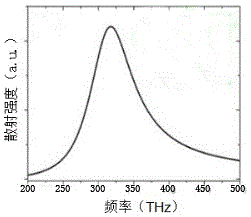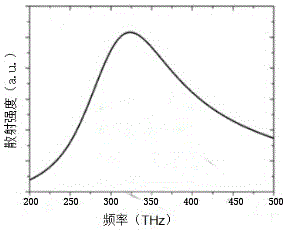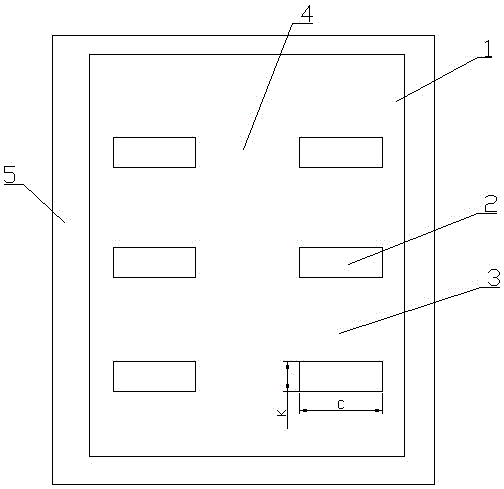Multiple nano-rod dimer array structure, manufacture method thereof, method for exciting Fano resonance of multiple nano-rod dimer array structure, and optical sensor comprising multiple nano-rod dimer array structure
An array structure and nanorod technology, applied in the field of optical sensors, can solve problems such as asymmetry, limited parameters, and difficulty in preparation, and achieve the effects of stable resonance, strong resonance, and excellent performance
- Summary
- Abstract
- Description
- Claims
- Application Information
AI Technical Summary
Problems solved by technology
Method used
Image
Examples
Embodiment 1
[0035] Example 1, such as image 3 The multiple nanorod dimer array structure shown includes a substrate 1 made of glass, and the refractive index of the substrate 1 is 1.5-1.9, preferably 1.5. There are three longitudinally arranged nanorod dimers on the substrate 1 in a vacuum environment. It is confirmed by experiments that when the number of nanorod dimers is 1 or 2, as figure 1 with figure 2 As shown, there is no phenomenon of quantum interference in the relationship between frequency and scattering intensity, and the Fano resonance characteristic of the multiple nanorod dimer array structure is not obvious. A longitudinal gap 3 is reserved between adjacent nanorod dimers. Because the number of nanorod dimers is 3, there are two longitudinal gaps 3 in total, and the lengths of the two longitudinal gaps 3 are equal, both 0 to 90 nm, preferably 70 nm. The nanorod dimer comprises two nanorods 2 with a lateral gap 4 reserved therebetween, and the material of the nanorods ...
Embodiment 2
[0043] Embodiment 2, the difference between this embodiment and Embodiment 1 is: the transverse gap 4 between the nanorods is equal, is 0 ~ 100 nm, preferably 20 nm; the length of each nanorod 2 is also equal, is 135 ~ 270 nm, preferably 190 nm; the longitudinal gap 3 between each nanorod dimer is not equal, but in the range of 0-90 nm. Such as Figure 8 As shown, when the longitudinal gap is changed, better Fano resonance can still be achieved.
Embodiment 3
[0044] Embodiment 3, the difference between this embodiment and embodiment 1 is: the longitudinal gap 3 between adjacent nanorod dimers is equal, is 0 ~ 90 nm, preferably 70 nm; the length of each nanorod 2 Also equal, 135-270 nm, preferably 190 nm; the lateral gap 4 between the nanorods is not equal, but in the range of 0-100 nm. Such as Figure 9 As shown, when the lateral clearance is changed, better Fano resonance can still be achieved.
PUM
 Login to View More
Login to View More Abstract
Description
Claims
Application Information
 Login to View More
Login to View More - R&D
- Intellectual Property
- Life Sciences
- Materials
- Tech Scout
- Unparalleled Data Quality
- Higher Quality Content
- 60% Fewer Hallucinations
Browse by: Latest US Patents, China's latest patents, Technical Efficacy Thesaurus, Application Domain, Technology Topic, Popular Technical Reports.
© 2025 PatSnap. All rights reserved.Legal|Privacy policy|Modern Slavery Act Transparency Statement|Sitemap|About US| Contact US: help@patsnap.com



